#Flutterflow app development
Explore tagged Tumblr posts
Text
Enterprise FlutterFlow Training: Build Scalable Apps

In a world where mobile-first experiences dominate every industry, the pressure to deliver flawless, scalable apps has never been greater. Flutterflowdevs is here to transform your development pipeline with our Enterprise FlutterFlow Training—the ultimate weapon to crush deadlines, impress users, and catapult your team’s performance to elite levels.
Why settle for slow development cycles, bloated code, or hiring roadblocks? With our training, your in-house team can master FlutterFlow’s intuitive visual development platform and deploy enterprise-grade apps at record-breaking speed.
Accelerate App Delivery with FlutterFlow
Speed is everything in today’s fast-moving markets. FlutterFlow, powered by Google’s Flutter framework, revolutionizes how apps are built—no more weeks of redundant coding, no more chasing full-stack unicorns. Our Enterprise FlutterFlow Training teaches your team how to visually build, integrate, and scale robust apps using drag-and-drop components and backend logic without compromising on performance or flexibility.
With this training, your organization will go from idea to deployment in days—not months.
Who Is This For? Enterprises That Demand More
If your company is growing fast and facing bottlenecks in tech delivery, our program is tailored for you. Whether you’re a product manager, CTO, or head of engineering, you know the cost of delay. Empower your existing developers to build advanced, scalable apps without waiting on traditional workflows.
Perfect for:
SaaS companies needing rapid iterations
Startups scaling their MVPs into robust platforms
Agencies serving multiple clients
Corporations modernizing their internal systems
What You’ll Learn: Scalable Mastery from Day One
Our training goes far beyond the basics. It’s designed to turn your developers into FlutterFlow power users who can architect systems that scale.
You’ll learn:
Advanced app logic with Firebase & APIs
Custom Flutter code integration
State management & complex data modeling
Authentication and role-based access control
Deployment workflows and CI/CD integration
The end result? Enterprise-grade, scalable applications built with astonishing speed and clarity.
Why Flutterflowdevs?
Because Flutterflowdevs doesn’t just teach FlutterFlow. We build and deploy apps daily using this very tool for clients across the globe. Our training is rooted in real-world scenarios, case studies, and optimizations learned on the front lines.
You're not just learning the how. You're learning the why, the when, and the exact strategy top-tier companies use to leap ahead of competitors.
The Secret Power Add-On: SaaS Email Copywriting Course
Building an app is only half the battle. You need users, retention, and conversion. That's why every enrolment in our Enterprise FlutterFlow Training comes bundled with access to our SaaS Email Copywriting Course.
This isn’t some fluff-filled tutorial. It’s a proven framework used by SaaS growth experts to write emails that convert like crazy. You’ll learn:
How to craft irresistible onboarding sequences
How to reactivate dormant users with the perfect win-back email
How to write launch campaigns that actually get opened and clicked
How to segment and personalize messages at scale
When you combine a scalable app infrastructure with high-converting email flows, you don’t just build software—you build an unstoppable SaaS growth engine.
Urgency Matters: Why You Need to Enroll Today
Your competitors aren’t waiting—and neither should you. Every day you delay is another day you risk being outrun by startups with leaner, faster processes.
The FlutterFlow ecosystem is evolving rapidly. Those who master it early will dominate app markets, cut engineering costs, and retain users longer.
By enrolling now, your team will:
Slash development timelines by up to 70%
Eliminate costly dependencies on multiple tech stacks
Future-proof your app infrastructure
Unlock the growth playbook with expert email strategies
Real Results from Real Teams
Enterprises that have completed our training are shipping 3x faster, cutting contractor expenses in half, and delivering better UX thanks to rapid prototyping and deployment.
“We were stuck in dev hell. Now our team builds fully functional apps in a week. The bonus SaaS Email Copywriting Course helped us double our activation rates. Game changer!” — CTO, FinTech Startup
Let’s Recap What You Get:
Full Enterprise FlutterFlow Training (beginner to advanced)
Hands-on projects, templates, and guided walkthroughs
Expert instruction from seasoned app builders
Lifetime access and updates
FREE SaaS Email Copywriting Course
Scalable app development + scalable growth marketing in one package
Final Word: This Is More Than Training. It’s a Growth Revolution.
In a tech world filled with complexity, Flutterflowdevs offers clarity, speed, and results. Our Enterprise FlutterFlow Training is the fastest way to empower your team, slash your go-to-market time, and dominate your niche.
FOR MORE INFORMATION:
Flutterflow Web App
Flutterflow Web Development Agency
Top Flutterflow Development Company
0 notes
Text
FlutterFlow App Builder: Empowering Effortless App Creation with Stunning Results
Introduction: In the dynamic world of app development, having a tool that simplifies the process without compromising on quality is invaluable. FlutterFlow App Builder has emerged as a game-changer, empowering both novice and experienced developers to create stunning apps effortlessly. This article explores the features, benefits, and the seamless app-building experience that FlutterFlow offers.
Understanding FlutterFlow:
FlutterFlow is an intuitive app development platform that leverages the power of Google's Flutter framework. What sets it apart is its visual development approach, enabling users to design and develop applications without delving into complex code. Whether you're a seasoned developer or someone with no coding experience, FlutterFlow opens doors to a world of creative possibilities.
Key Features of FlutterFlow App Builder:
Drag-and-Drop Interface: FlutterFlow's user-friendly interface allows developers to design app layouts effortlessly using a drag-and-drop approach. This visual development method eliminates the need for extensive coding, making it accessible to individuals with varying levels of technical expertise.
Real-Time Preview: One of FlutterFlow's standout features is the real-time preview option. As you design your app, you can instantly see how changes will appear on different devices. This immediate feedback streamlines the design process and enhances the overall user experience.
Pre-Built Components: FlutterFlow comes equipped with a library of pre-built components and templates. These ready-to-use elements, ranging from buttons to complex UI components, expedite the app-building process and ensure a polished and professional look for your application.
Integrated Backend Services: Managing backend services is seamlessly integrated into FlutterFlow. Users can set up databases, authentication, and other backend functionalities without leaving the platform, simplifying the development workflow.
Responsive Design: FlutterFlow emphasizes responsive design, ensuring that apps created with the platform are optimized for various screen sizes and devices. This responsiveness enhances the user experience and caters to the diverse landscape of the digital market.
Custom Code Integration: For those with coding expertise or specific customization requirements, FlutterFlow allows the integration of custom code snippets. This flexibility ensures that developers can implement unique functionalities beyond the platform's visual capabilities.
Benefits of Using FlutterFlow:
Rapid Prototyping: FlutterFlow accelerates the app development process, enabling developers to create rapid prototypes. This is particularly advantageous for testing ideas, gathering feedback, and iterating on designs swiftly.
Accessible to Non-Developers: The visual nature of FlutterFlow makes it accessible to individuals without a coding background. Entrepreneurs, designers, and business owners can actively participate in the app creation process.
Time and Cost Efficiency: By reducing the complexity of coding and streamlining the development workflow, FlutterFlow contributes to significant time and cost savings. This is especially beneficial for small businesses or startups with limited resources.
Consistent User Experience: FlutterFlow promotes a consistent and polished user experience by offering pre-built components and templates. This ensures that apps created on the platform adhere to design best practices and industry standards.
Community Support: FlutterFlow has a growing and supportive community. Users can leverage forums, tutorials, and resources shared by the community to enhance their skills and troubleshoot issues.
How to Get Started with FlutterFlow:
Sign Up: Begin by signing up for a FlutterFlow account. The platform offers a free plan with limited features and paid plans for more extensive functionalities.
Explore Tutorials: FlutterFlow provides tutorials and documentation to help users get acquainted with the platform. These resources cover everything from basic functionalities to advanced features.
Start Designing: Dive into the app-building process by using the drag-and-drop interface to design your app's layout. Experiment with pre-built components and templates to bring your vision to life.
Integrate Functionality: Explore FlutterFlow's backend services to add functionalities such as databases, user authentication, and more. Customize your app further by integrating any required custom code.
Preview and Publish: Utilize the real-time preview feature to see how your app looks on different devices. Once satisfied, FlutterFlow allows for seamless publishing to various platforms, ensuring your app reaches your target audience.
Conclusion: FlutterFlow App Builder epitomizes the democratization of app development, offering a platform where creativity meets accessibility. Whether you're a seasoned developer looking for efficiency or a non-technical individual with a vision, FlutterFlow empowers you to bring your app ideas to fruition effortlessly. Embrace the future of app development with FlutterFlow and experience the joy of creating stunning applications with ease.
For more details, visit us :
flutterflow supabase
firebase flutterflow
flutterflow ai
flutterflow ios app
0 notes
Text
How to Create An App and Make Money in 2024

Mobile applications have emerged as a critical business tool, providing businesses with another platform for sales generation, service enhancement, and income creation. The emergence of these mini devices has started eclipsing the use of powerful desktop/laptop devices, and hence, faster development of mobile applications has occurred.
Whether your goal is to improve services or sell products, the ultimate objective is often to make money from apps. On the other hand, there ought to be a well-conceived plan even before one sets out to develop an application.
This article describes the entire process of creating a mobile application with income-generating goals. If you don’t know how to proceed with the steps of developing an app, do not worry, as we have already done a comprehensive write-up on how to build a mobile app.
What’s the need of this guide?
A lot of people think their businesses will start making money the moment they take them online. But that is not true. The online market is as much competitive as the physical one. Therefore, when design, development, and marketing of such an application is carried out, the assumption of being present alone is not enough.
We have compiled useful information for people interested in making money from application creation. This guide will include popular monetization models for mobile developers to consider.
Let’s start with how to earn money by developing a mobile application. There are four ways to earn money with mobile application development.
How do You Make Money by Creating an App?
Mobile app development has become a lucrative field, with numerous opportunities to earn money through various monetization methods. The upcoming section will explore popular strategies for generating revenue from your mobile apps.
Whether you’re a third-party service provider or aiming to sell services directly through your app, choosing the right monetization approach is crucial. The success of your app’s revenue generation depends on aligning your monetization strategy with the type of app you’re developing.
When you develop a mobile app, you can choose different monetization options to start earning money. You can make money through the following methods. If you are not selling any services or products, then you can still earn money. Let’s look at some popular ways to earn money with mobile app development.
Application Development Platforms

Native Development Platforms
iOS (Swift/Objective-C): This platform is specifically for developing applications for Apple devices. It offers high performance and access to all device features, but requires separate codebases for iOS and Android.
Android (Java/Kotlin): Similar to iOS, Android development allows for deep integration with device features. However, it also requires managing two codebases for cross-platform functionality.

Cross-Platform Development Tools
React Native: Developed by Facebook, React Native allows developers to use JavaScript to build mobile applications for both iOS and Android. It combines the performance of native apps with the efficiency of web technologies.
Flutter: Google’s Flutter uses the Dart programming language to create natively compiled applications for mobile, web, and desktop from a single codebase. It is known for its expressive UI and fast performance.
No-Code/Low-Code Platforms
Adalo: Adalo is a user-friendly platform that allows you to build native apps for iOS and Android without writing code. It offers a wide range of templates and components to help you create visually appealing apps.
Bubble: Bubble is another no-code platform that enables users to create web applications with drag-and-drop functionality, focusing on rapid development and deployment.
FlutterFlow: This platform leverages Flutter’s capabilities to provide a visual interface for building cross-platform apps. It offers a drag-and-drop builder and integrates with Firebase for backend services.
Looking for a Mobile App Development Partner? We’re Here to Help!
Creating a app and monetizing it requires a strategic approach. Start by identifying a problem that your app can solve and targeting a specific audience. Design a user-friendly interface and prioritize performance.
If you’re looking to build a custom mobile app to earn money, look no further! Brilworks offers cost-effective mobile development services across various industries, including healthcare, fintech, media, and entertainment.
To Learn More, Read This Article:
0 notes
Text
How We Delivered a Scalable Messaging App Using Flutterflow
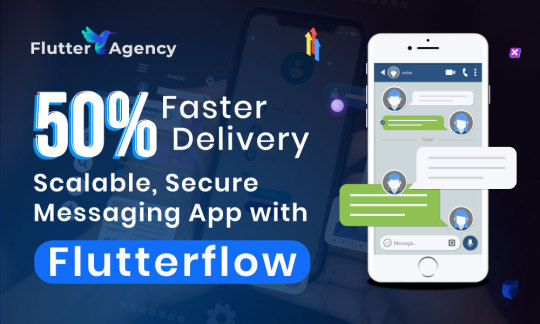
Learn how we built a scalable, secure messaging app for a startup using Flutterflow. Discover our approach to building reliable solutions that grow with your business.
0 notes
Text
#Custom App Development#business application#Traditional app development#Low Code Development#software development#Benefits Of Low-Code Platforms#FlutterFlow#create a mobile application
0 notes
Text
Build A Fully Functional APP Like Tinder with FLUTTERFLOW

Today’s digitally driven landscape makes having a strong mobile application for your business or personal project more of a necessity than an advantage. The advancement of dating APP Like Tinder development tools has made creating apps simpler than ever. That’s exactly what the cutting-edge tool FlutterFlow does. The purpose of this piece is to serve as a comprehensive tutorial for Creating a Tinder-like App using FlutterFlow.
FlutterFlow: An Explanation
Developing Flutter mobile apps with FlutterFlow is simple. FlutterFlow’s drag-and-drop interface lets developers and non-developers build beautiful, high-performing iOS and Android apps.
Advantages of Developing Apps with FlutterFlow
By simplifying and democratizing the dating APP Like Tinder development process, FlutterFlow has sparked a technological revolution. Take a look at this in-depth analysis of why you should use for your next Creating a Tinder-like App using FlutterFlow:
Invention Without Coding:
Accessibility: Ideal for individuals without coding knowledge, opening doors for entrepreneurs, designers, and enthusiasts to bring their dating APP Like Tinder ideas to life.
Efficiency: Reduces the time it takes to go from idea to implementation by speeding up the development process.
Uniform Codebase for Portability Across Platforms
Create once distributed to both iOS and Android, maintaining uniformity.
Cost-Effective: Removes the need for expensive, dedicated iOS and Android development teams.
Easy-to-Use GUI Editor
Live Sneak Peeks: The interface is drag-and-drop, so you can see the results as you work.
Modular Construction: Provides a wide variety of widgets and configuration settings for making the dating APP Like Tinder look and behave as desired.
Simple Firebase Integration
Dynamic Capabilities: Easily incorporates cloud storage, user authentication, and real-time data.
Scalability: Firebase automatically adjusts to the increasing demands of your app.
Rapid Prototyping Instant Testing: Allows for quick iteration based on user feedback through prototyping and testing of dating APP Like Tinder ideas.
Market Faster: Thanks to shortened development cycles, quicker time to market is a significant competitive advantage.
Connection and Helping Hands
Active Forums: Participate in a group of users for problem-solving, learning, and exchanging information.
Constantly Updating: The FlutterFlow team frequently releases updates, giving users the most up-to-date set of capabilities and tools possible.
FlutterFlow is a revolutionary new approach, not just a useful tool. It lowers the entry barrier for making mobile apps, making the market more open to new ideas. FlutterFlow is a potent combination of simplicity, efficiency, and power for anyone looking to build an app.
How to Create a dating APP Like Tinder Using FlutterFlow

FlutterFlow, a revolutionary platform, lets non-technical users build powerful, beautiful apps for personal and business use. You Creating a Tinder-like App using FlutterFlow, whether you’re a seasoned programmer looking for a simple answer or a young entrepreneur with a new dating APP Like Tinder idea.
Think About the Big Picture
A well-defined goal serves as the starting point for the long process of dating APP Like Tinder development. Get your mind around the idea first. Create this app — why? Which demographic are you targeting? So, what makes your dating APP Like Tinder unique? By clearly outlining your app’s central purpose, you can better navigate the design and development decisions ahead.
Sign up for FlutterFlow Today
The first step in making your dating APP Like Tinder idea a reality is signing up for a FlutterFlow account — the platform’s intuitive design suits programmers of all skill levels. With FlutterFlow’s free tier, you can test the platform to see if it meets your needs before paying for a subscription.
Create Your dating APP Like Tinder By
After registering with FlutterFlow, you can begin developing apps. The FlutterFlow visual editor’s drag-and-drop functionality makes it simple to design your application’s user interface (UI). Your app’s interface is entirely customizable, from the placement of text fields and buttons to the addition of interactive elements and images.
Actions to Increase Capabilities
An interactive user interface is the backbone of any worthwhile app. FlutterFlow’s ‘Actions’ feature streamlines this procedure. You can seamlessly add functionality to your dating APP Like Tinder elements, defining actions triggered by user interactions. FlutterFlow’s activities allow you to create a dynamic and responsive user experience without writing a single line of code by navigating to a new screen, displaying dynamic content, or integrating with external APIs.
Use Records and Files
Data management is a feature required by many apps. FlutterFlow allows you to connect your dating APP Like Tinder to databases effortlessly. Access and easily manage user data, dating APP Like Tinder content, and other data by integrating with popular databases like Firebase or Airtable. The user experience can be robust and engaging by fusing disparate datasets.
Set up a System for Managing Users and Authentication
FlutterFlow streamlines the authentication and user management processes, making it ideal if your dating APP Like Tinder requires user accounts or provides individualized experiences. Log in with Google or Facebook, or use a combination of email and a password in your system. Control who can do what and how they like things by managing user profiles, access levels, and preferences.
Adjusting for a Variety of Screen Sizes
There are numerous sizes and orientations for mobile devices. FlutterFlow’s responsive design features make your dating APP Like Tinder look fantastic on any device. You should perform extensive testing on various devices and screen orientations, adjusting as needed to ensure a smooth and intuitive user experience.
Extensive Evaluation
The testing phase of dating APP Like Tinder development is essential. To help you find and fix any problems with your dating APP Like Tinder before it goes live, FlutterFlow includes powerful testing tools that mimic user interactions. Your app’s functionality, the quality of its user experience, and the number of positive reviews you receive all depend on how thoroughly you test it.
Release Your App
It’s time to make your dating APP Like Tinder public after many hours of designing, developing, and testing. It’s simpler to export your dating APP Like Tinder to different operating systems, like iOS and Android, with FlutterFlow. Make sure your dating APP Like Tinder satisfies the criteria of dating APP Like Tinder stores and is ready for user downloads by adhering to the platform-specific guidelines provided by FlutterFlow.
Spread the Word and Get Some Opinions
App development is just the beginning. Publicize your dating APP Like Tinder on social media, online communities, and dating APP Like Tinder review sites to reach your audience. To help shape future iterations and improvements, solicit user input. Incorporate user comments into your app’s development process to improve it for everyone who uses it.
Repeat and enhance
Both the digital landscape and user tastes are constantly evolving. Maintaining your app’s currency and popularity requires consistent updates. Maintain familiarity with the latest technological developments, market tendencies, and user needs. You should regularly update your dating APP Like Tinder in response to user feedback and market trends, adding new features, improving existing ones, and refining the user interface.
Unquestionably, FlutterFlow has opened up dating APP Like Tinder development to a larger audience. Whether you’re a developer searching for a quicker development tool, a business owner looking to get into the mobile dating APP Like Tinder market at a low cost, or an enthusiast with an idea but no coding experience, FlutterFlow offers a platform to turn ideas into functional realities.
It would be best if you got in touch with a Dating App Development Company for a better dating app. The secret to effectively using any instrument is to understand its functions and use them wisely. With this guide, you can embark on your dating APP Like Tinder development journey and Creating a Tinder-like App using FlutterFlow. Have fun erecting!
1 note
·
View note
Text
Discover how AI in FlutterFlow and FlutterFlow AI integration are transforming app development with smart tools, automation, and faster workflows.
0 notes
Text
Bubble vs Flutterflow: Which No-Code Platform is Best for Building Apps in 2025

In the booming world of no-code tools, two platforms have stood out in 2025: Bubble and Flutterflow. As the demand for fast, scalable, and user-friendly app development grows, choosing the right no-code web app development platform has become crucial for startups and businesses alike.
So, how do these two platforms compare—and which one is best for your next app?
Bubble: The Power of Custom Web Apps
Bubble is a veteran in the no-code space, known for its robust capabilities in building complex web applications without writing code. It allows users to build full-stack apps—from front-end UI to database logic—using a drag-and-drop editor and visual workflow builder.
Why Choose Bubble in 2025:
Full control over front-end and back-end logic
Ideal for SaaS platforms, dashboards, marketplaces
Large plugin ecosystem and API integrations
Excellent for building responsive web apps
If your goal is to build a highly customizable, database-driven web app, Bubble remains a go-to choice. Many startups today choose to hire dedicated Bubble developers to unlock advanced capabilities like third-party integrations, API management, and scalable architecture.
Flutterflow: Best for Mobile and Cross-Platform Apps
Flutterflow, on the other hand, is rising fast—especially for those focused on mobile-first experiences. Built on top of Google's Flutter framework, it enables developers and non-tech users to create native iOS, Android, and web apps from one codebase.
Why Choose Flutterflow in 2025:
Optimized for mobile performance
Clean UI/UX with drag-and-drop simplicity
Integration with Firebase for real-time databases
Exportable clean Flutter code for full control
Flutterflow shines when you’re targeting app stores or building apps that need a polished native experience across devices.
So, Which One Should You Pick?
Choose Bubble if you're focused on web apps, require complex logic, or want to scale an internal tool or SaaS product quickly.
Choose Flutterflow if you're building mobile-first apps and need native performance without starting from scratch.
Both platforms are leaders in the no-code web app development platform category, but your choice depends on your app goals, performance needs, and whether you want to launch on the web, mobile, or both.
Pro Tip: For advanced projects, it's smart to hire dedicated Bubble developers or Flutterflow experts to ensure clean architecture, seamless integration, and faster go-to-market.
In 2025, no-code is no longer a shortcut—it’s a strategy. Choose wisely!
Source URL: https://www.tuvoc.com/blog/bubble-vs-flutterflow-which-no-code-platform-is-best-for-building-apps-in-2025
#NoCode#NoCode2025#BubbleVSFlutterflow#AppDevelopment#NoCodeApps#Flutterflow#BubbleIO#BuildWithoutCode#NoCodeComparison#TechTrends2025
0 notes
Text
Bubble vs Flutterflow: Which No-Code Platform is Best for Building Apps in 2025
Compare Bubble and Flutterflow, two leading no-code platforms, to determine which is best suited for app development in 2025. Explore their features, flexibility, and scalability for your next project.
#BubbleVsFlutterflow#NoCode2025#AppDevelopment#NoCodePlatforms#BubbleIO#Flutterflow#TechComparison#BuildAppsFast#NoCodeRevolution#FutureOfDevelopment
0 notes
Text
How to Create Your Own App in 2025: A Beginner’s Step-by-Step Guide

In today’s digital era, apps are not just for tech giants or professional developers. Whether you're a small business owner, a student with a great idea, or a creative mind exploring new horizons, 2025 is the best time to learn how to create your own app — even if you don’t know how to code. Thanks to powerful and user-friendly tools, creating a mobile app is more accessible than ever.
This blog walks you through every essential step, from concept to launch, in a simple and beginner-friendly way.
Step 1: Start with a Clear Idea
Every great app starts with a strong idea. Take time to define:
What your app does
Who it helps
What problem it solves
Your idea should be simple and focused. For instance, a task reminder app, a food ordering service for your area, or an app that helps students manage study schedules. Write your thoughts on paper or use a mind-mapping tool to organize them.
Step 2: Do Market Research
Once you have your idea, look around to see if similar apps already exist. Analyze:
What features those apps offer
How users have rated them
What users complain about
This step helps you understand where you can improve or stand out. Tools like Google Trends, App Store reviews, and user forums can offer helpful insights.
Step 3: Define the Core Features
As a beginner, it’s better to focus on building an MVP — a Minimum Viable Product. List the features your app must have in its first version.
For example, if you’re making a recipe app, your MVP could include:
Recipe categories
Search function
Save favorite recipes
Share via social media
Avoid adding too many complex features in the beginning. You can always update the app later based on user feedback.
Step 4: Choose an App Builder Tool
You don’t need to be a software engineer to build an app today. Many no-code or low-code platforms let beginners create apps without writing a single line of code.
Popular tools in 2025 include:
Thunkable: Ideal for Android and iOS, easy drag-and-drop interface.
Adalo: Great for building native mobile apps visually.
Glide: Turns your Google Sheets into mobile apps quickly.
FlutterFlow: Best for those looking for more customization with low-code options.
These platforms offer templates, component libraries, and step-by-step guidance to make your job easier.
Step 5: Design Your App
Good design matters as much as functionality. Start by creating wireframes (basic screen layouts) using tools like:
Figma
Canva (mobile templates)
Adobe XD
Keep your user interface clean and intuitive. Choose fonts, icons, and colors that match your app’s purpose. For example, use soft colors for a meditation app, or bold tones for a fitness tracker.
Step 6: Start Building the App
Now it's time to bring your design to life. Use your chosen platform to:
Add pages/screens
Insert buttons, images, and text
Link the screens for smooth navigation
Connect to a database if your app needs to store user data
Most app builders have preview options so you can test the look and feel of your app as you build it.
Step 7: Test Your App
Before launching, test your app thoroughly. Check how it performs on different devices, screen sizes, and internet connections. Ask a few friends or family members to try it and provide feedback.
Focus on:
Usability
Navigation
Speed and loading time
Any bugs or glitches
Make necessary adjustments to enhance the user experience.
Step 8: Publish Your App
When you're satisfied with your app, you can publish it to app stores:
For Android:
Create a Google Play Developer account ($25 one-time fee)
Upload the APK file
Add descriptions, screenshots, and submit for review
For iOS:
Join the Apple Developer Program ($99/year)
Use Xcode or app builder integrations to submit the app
Complete the App Store checklist and publish
App review and approval may take a few days, depending on guidelines and content.
Step 9: Promote Your App
Once live, your app needs users. Start promoting using:
Social media platforms (Instagram, LinkedIn, Twitter)
Blog posts and SEO (like this one!)
App Store Optimization (ASO)
Paid ads (Google Ads, Meta Ads)
Word-of-mouth marketing
Create engaging content around your app’s features and benefits to attract attention and build credibility.
Step 10: Keep Improving Based on Feedback
Your first version isn’t the end — it’s the beginning. Listen to your users. Add features they request, fix bugs, and keep enhancing the app. Regular updates not only keep users happy but also help with app ranking on stores.
Final Thoughts
Learning how to create your own app in 2025 is a powerful skill that opens doors to entrepreneurship, innovation, and financial growth. You don’t need to be a tech expert. With the right idea, smart planning, and easy-to-use tools, you can launch your app and start making a difference.
So, what are you waiting for? Start building your app today — your future self will thank you.
#AppDevelopment#BuildAnApp#MakeYourOwnApp#AppBuilder#NoCode#LowCode#MobileApp2025#CreateAnApp#AppCreation#TechForBeginners#BeginnerFriendly#TechTips#LearnToCode#NoCodeMovement#FirstApp#Adalo#GlideApps#Thunkable#FlutterFlow#FigmaDesign
0 notes
Text
Unlock the Future of App Development with Flutterflowdevs!
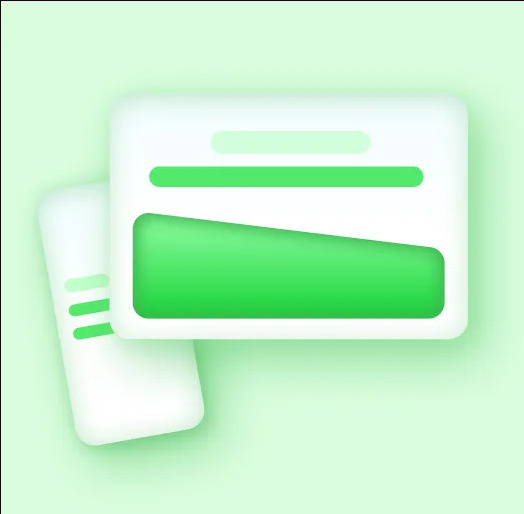
Are you ready to catapult your app development journey into the stratosphere? Welcome to Flutterflowdevs, your one-stop destination for next-generation app solutions! We don’t just build apps; we craft digital experiences that captivate, convert, and conquer the competition. Whether you're a budding entrepreneur or a seasoned business owner, our elite Flutterflow Developers are the secret weapon you’ve been searching for.
Why Settle for Ordinary When You Can Have Extraordinary?
Time is ticking, and the digital world waits for no one. Your competitors are racing ahead, launching flawless apps that hook users and boost revenue. Don’t get left behind! With Flutterflowdevs, you’ll gain access to:
Lightning-Fast Development: Our developers leverage the power of Flutterflow to create stunning apps faster than ever. No more endless coding marathons—just rapid, robust results.
Cross-Platform Compatibility: Reach users on both iOS and Android without a hitch. Our apps look and feel native on every device, giving you maximum market reach.
Cutting-Edge UI/UX Designs: Wow your audience with sleek, modern interfaces that turn casual visitors into loyal users.
Scalability and Flexibility: Whether you're launching a small MVP or scaling up to millions of users, our apps grow with you—no compromises.
Meet the Flutterflow Developer Dream Team
Our Flutterflow Developers aren’t just tech experts—they’re visionaries. They don’t just follow trends; they set them! Armed with unrivaled expertise and a passion for innovation, they build apps that dominate the digital landscape.
Imagine launching your app weeks ahead of schedule, effortlessly outshining your competition. With our team, this dream becomes reality. From concept to deployment, we’re with you every step of the way, transforming your ideas into powerful, feature-rich applications.
The Unstoppable Benefits of Choosing Flutterflowdevs
Choosing Flutterflowdevs means choosing success. Our team brings:
Customized Solutions: No one-size-fits-all here! We tailor each project to your unique needs and goals.
Unmatched Quality Assurance: Every line of code is meticulously tested to ensure flawless performance.
Data-Driven Insights: We integrate analytics that help you track and optimize user engagement.
Maintenance and Support: Our commitment doesn’t end at deployment. We offer ongoing support to keep your app at peak performance.
Success Stories That Inspire
Still not convinced? Our track record speaks for itself! Businesses just like yours have turned their ideas into highly successful apps with the help of our Flutterflow Developers. From innovative startups to established brands, our clients consistently report skyrocketing downloads, glowing user reviews, and a surge in customer retention.
Act Now—Your Digital Revolution Awaits!
The clock is ticking! The sooner you partner with Flutterflowdevs, the sooner you’ll launch your dream app and dominate your market. Don’t miss out on the future—get started today and watch your vision come to life faster than you ever thought possible.
Read more:
Hire Flutterflow Developer
Hire flutterflow expert
Flutterflow Company
0 notes
Text
Future Trends in Mobile Apps: What Flutter Developers Should Know
The world of mobile app development is evolving at a rapid pace. As we step into a more connected, data-driven future, staying updated with the latest trends is critical for mobile developers, especially for those working with Flutter. Flutter, with its cross-platform capabilities, has garnered immense popularity, offering an efficient framework for building apps for iOS, Android, and even web platforms. But with the fast-changing landscape, what should Flutter developers know to stay relevant in the future?
In this article, we’ll dive into the emerging trends in mobile apps that Freelance flutter mobile app developer should keep an eye on. Understanding these trends will help you stay ahead of the curve and adapt your skill set to meet the demands of the future.
1. Cross-Platform Development Becomes the Standard
One of the key reasons for Flutter’s popularity is its ability to develop cross-platform apps with a single codebase. While native development will always have its niche, the industry is moving towards reducing time and cost. Cross-platform frameworks, including Flutter, are leading this movement. In the future, businesses will increasingly prefer frameworks that allow them to release applications on multiple platforms simultaneously.
What Flutter Developers Should Do: Strengthen your expertise in cross-platform development and stay updated with the new features that Flutter releases. Flutter is continually evolving, with tools like FlutterFlow and Firebase integration making it easier to handle backend services. Focus on mastering Dart, the language Flutter uses, and the platform’s performance optimization techniques to ensure smooth and efficient app performance.
2. Increased Focus on App Security
With the rise of cyber threats, users are more concerned than ever about app security. Data breaches and privacy issues can ruin a business’s reputation. Therefore, mobile apps are focusing more on security and privacy, making them a priority during the development phase. As mobile apps become more deeply integrated into critical aspects of users’ lives (such as banking, healthcare, and finance), ensuring strong security protocols will be a non-negotiable aspect of app development.
What Flutter Developers Should Do: Security should be baked into every step of the development process. Familiarize yourself with common security vulnerabilities and practices like encrypting sensitive data, securing user authentication processes, and adhering to industry-standard security protocols. Flutter developers can utilize packages such as flutter_secure_storage to store sensitive data securely, and integrating biometric authentication (fingerprint or facial recognition) can be a significant value addition.
3. The Rise of AI and Machine Learning in Mobile Apps
Artificial Intelligence (AI) and Machine Learning (ML) are transforming the way mobile apps function, offering predictive analytics, personalized experiences, and advanced user insights. From chatbots to recommendation systems, AI and ML are becoming integral parts of mobile applications across all industries. This trend will only grow stronger, pushing developers to learn how to integrate AI/ML into their applications.
What Flutter Developers Should Do: Learn how to integrate AI and ML into Flutter apps. While Flutter doesn’t natively support AI/ML, you can use plugins and libraries to leverage AI tools. For instance, TensorFlow Lite can be integrated into Flutter for building intelligent applications. Furthermore, Google’s ML Kit offers various pre-trained models that can be integrated into your Flutter app for features like face detection, text recognition, and image labeling.
4. Flutter for Web and Desktop is on the Rise
While Flutter started as a mobile development framework, it has evolved to support web and desktop app development as well. This versatility makes it a great tool for businesses that want to maintain consistency across multiple platforms without hiring separate development teams for each.
As businesses look for unified experiences across mobile, web, and desktop platforms, Flutter’s “write once, deploy anywhere” approach will become more valuable. The ability to create responsive and adaptive designs with a single codebase will reduce development time and resources significantly.
What Flutter Developers Should Do: If you are a Flutter developer focused solely on mobile, now is the time to start learning about Flutter for Web and Desktop. Explore how Flutter’s widgets can adapt to different screen sizes and devices, and learn to manage the specific requirements for these platforms, such as web security, responsive layouts, and desktop-specific features like keyboard shortcuts and window management.
5. 5G Technology and Its Impact on App Development
The advent of 5G is transforming how mobile applications are built and used. With significantly faster speeds and lower latency, 5G opens the doors for more complex, real-time applications such as augmented reality (AR), virtual reality (VR), and enhanced streaming services. The improved network performance will allow developers to create more data-intensive applications without worrying about lag or buffering issues.
What Flutter Developers Should Do: Flutter developers should prepare for the increased demand for apps that leverage 5G’s capabilities. From real-time collaboration tools to immersive AR experiences, Flutter developers can start experimenting with more data-rich, real-time applications. Additionally, Flutter offers powerful tools and packages to support AR (e.g., ar_flutter_plugin), so familiarizing yourself with these will be key to capitalizing on 5G-driven trends.
6. Growth in Augmented Reality (AR) and Virtual Reality (VR)
AR and VR are no longer niche technologies limited to gaming and entertainment. Industries such as retail, real estate, healthcare, and education are integrating AR and VR into their mobile applications to offer more interactive and engaging experiences. As these technologies become mainstream, mobile developers must be equipped to work with AR and VR.
What Flutter Developers Should Do: Begin exploring Flutter’s AR and VR integration capabilities. Flutter plugins like ar_flutter_plugin and flutter_unity_widget allow developers to create immersive experiences. For developers new to AR/VR, understanding the basic concepts of 3D modeling and interaction design will be essential. Additionally, knowing how to handle device sensors like gyroscopes and accelerometers will further enhance your ability to build dynamic AR/VR experiences.
7. The Expansion of IoT-Connected Apps
The Internet of Things (IoT) is another fast-growing trend in mobile app development. IoT-connected devices such as wearables, smart home gadgets, and health monitoring systems are becoming a key part of daily life. Flutter can be used to create apps that communicate with these IoT devices, offering control, data visualization, and monitoring capabilities to users.
What Flutter Developers Should Do: IoT app development requires a deep understanding of networking protocols, data management, and device compatibility. Familiarize yourself with how Flutter can interface with IoT devices using Bluetooth, WiFi, or other communication protocols. Flutter has packages like flutter_blue and flutter_reactive_ble that can be used for interacting with Bluetooth-enabled IoT devices. Knowing how to handle large streams of data and ensuring minimal latency will be crucial as IoT continues to expand.
8. Super Apps and Modular App Design
Super apps, which offer a suite of services within one platform, are becoming increasingly popular in markets like Asia, and the trend is spreading globally. Examples like WeChat or Grab, which offer everything from messaging to payments to shopping in one app, are transforming how users interact with mobile platforms.
To create super apps or apps that integrate with them, developers will need to focus on modular design and microservices architecture. Modularization allows different app features to be developed and deployed independently, which is crucial for scaling super apps efficiently.
What Flutter Developers Should Do: Flutter’s flexibility allows for modular app development, which is perfect for building super apps or integrating features into them. Developers should learn to break down their applications into smaller, independent modules that can be updated without affecting the entire app. Focus on clean architecture patterns, such as using Flutter’s provider or riverpod for state management, and learn how to manage microservices and APIs for seamless app integration.
9. The Push for Sustainability and Energy Efficiency
As mobile usage increases, the pressure on developers to build energy-efficient apps is growing. App sustainability includes reducing battery usage, minimizing the app’s data consumption, and ensuring it doesn’t overheat or overuse device resources. This trend aligns with broader environmental goals and users’ demand for apps that don’t drain their device’s battery or consume excessive data.
What Flutter Developers Should Do: Flutter developers need to focus on optimization techniques to ensure apps are lightweight and consume fewer resources. Flutter provides profiling tools to monitor app performance, and developers should regularly use these tools to identify memory leaks, slow rendering, or inefficient code. Reducing the size of the app by eliminating unused resources and optimizing images and assets is another key strategy for building energy-efficient apps.
10. App Monetization and In-App Purchases
As the app economy continues to grow, finding new ways to monetize apps will be a major trend. Subscription-based models, in-app purchases, and advertisements will remain popular monetization strategies. The challenge, however, will be offering these services in a way that enhances rather than detracts from the user experience.
What Flutter Developers Should Do: Flutter developers should become familiar with different app monetization strategies and how to implement them in a user-friendly way. Google’s in-app purchase and ad platforms, which integrate well with Flutter, offer tools for seamless integration of monetization strategies. Additionally, understanding user behavior and designing apps with user-centric features can help improve the success of these monetization efforts.
Conclusion
The future of mobile app development is bright, with innovations in technology shaping the direction of the industry. For Freelance flutter mobile app developer, staying informed about these trends and continuously improving your skill set is vital. From cross-platform development to AI integration, 5G, and IoT, the opportunities are vast. By embracing these trends, Flutter developers can ensure they remain competitive and continue delivering cutting-edge solutions in the ever-evolving mobile app landscape.
This content is originally posted on: https://www.vivekverma.com/ Source URL: https://www.vivekverma.com/blog/future-trends-in-mobile-apps-what-flutter-developers-should-know/
0 notes
Text
How We Delivered a Scalable and Secure Messaging App for a Startup Using Flutterflow
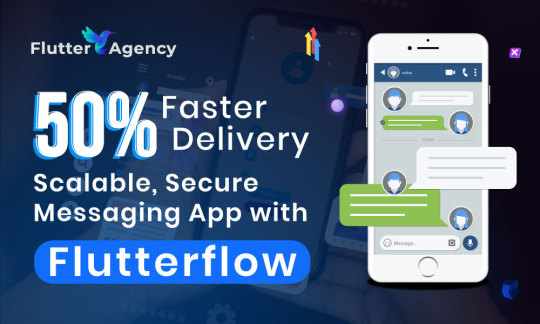
Messaging apps are now essential in many industries. These include healthcare, finance, social networking, and e-commerce. As businesses seek real-time communication, demand for messaging platforms is rising. They need them to be scalable, secure, and feature-rich.
Startups, in particular, must build an app that meets users' high expectations. It must also grow with their business and be very secure.
For startups, creating such an app can be complex. They must balance limited resources, tight timelines, and the need for rapid scalability. This is where a low-code platform like Flutterflow becomes invaluable.
Flutterflow is known for its developer-friendly interface and strong features. It provides a fast way to build cross-platform apps. It lets top app developers build scalable, secure messaging apps. It does this by enabling faster iterations and smoother integrations. This helps them work within startups' tight constraints.
Understanding the Startup's Requirements
A successful messaging app must enable real-time communication. Users must be able to send and receive messages instantly. For this startup, real-time messaging was crucial. But, the app also had to scale as the user base grew. Scalability means the app can handle more traffic as it gains users. It must do this without losing performance. Also, security is a critical concern. In today's world, data privacy is vital.
Building an app with these features, on a startup's tight budget, was a challenge. Startups often need custom app development services. It must be both powerful and cost-effective. The solution had to be both customizable and resource-efficient. It must meet the growing user demand without straining the startup's budget.
We needed a method for fast iterations, low overhead, and strong security. It also had to be flexible enough to scale as needed.
Why We Chose Flutterflow for This Project
We selected Flutterflow for several key reasons:
Rapid development:
A low-code platform that accelerates development by reducing manual coding.
Ideal for startups needing a fast time-to-market.
Cross-platform compatibility:
Single codebase for both iOS and Android.
It saves time and reduces costs by eliminating the need to manage separate versions.
Cost efficiency:
Low development and maintenance costs, making it budget-friendly for startups.
Easy scalability:
Scalable architecture that supports growth without requiring significant changes.
Integration with Firebase:
Real-time databases and secure user authentication are built-in for enhanced functionality.
Third-party API support:
Flexibility to integrate custom features and external services.
These factors make Flutterflow the best choice. Many top app developers prefer it to build secure, scalable apps within startup limits.
Designing the Architecture for Scalability
We designed a robust backend for the messaging app. It had to handle real-time communication. The focus was on performance and scalability.
The app's backend used a mix of cloud services and real-time databases. This allowed messages to be sent and received instantly. Using Firebase for real-time messaging, we ensured a smooth user experience, even at peak times.
Scalability was critical. So, we used the cloud. It could handle more users without slowing down. As user activity grew, the cloud services adjusted resources. This kept the app fast and responsive. We also optimized the database. It now retrieves and stores data efficiently. This helped the app scale effortlessly.
Flutterflow’s built-in tools were key. They ensured a smooth connection between the front-end and back-end. Its integration with Firebase lets us build a scalable, real-time system. It synchronized users. The platform's easy interface sped up development. The cloud architecture, database tuning, and Flutterflow's tools made a scalable app. It adapts to user growth. This is essential for any custom app development services or project.
Additionally, implementing these strategies not only enhanced the app's performance but also provided a foundation for future growth and adaptability. By leveraging advanced cloud services and real-time databases, we ensured that the messaging app could handle increasing user demands without compromising on quality or speed.
The seamless integration between Flutterflow and Firebase allowed us to efficiently manage and synchronize data across multiple devices, reinforcing the app's reliability and robustness. This holistic approach to development not only addressed immediate challenges but also set the stage for long-term success and scalability in the competitive messaging app market.
Implementing Security Features
Security was key in developing this messaging app. Users had to trust that their communications were private and protected. In any app with sensitive user data, secure communication is crucial. It prevents breaches, hacks, and unauthorized access. We ensured the app's architecture embedded data protection and privacy.
Messages fly between users, shielded by an invisible fortress. Our end-to-end encryption creates an impenetrable barrier, ensuring privacy reigns supreme in every exchange. Coded transmissions shield conversations, barring all but chosen eyes from deciphering their contents. No third party, not even the developers, can access them.
We used Firebase Authentication for user login. It is secure and reliable. It supported multiple authentication methods, like email and Google. This improved convenience without compromising security.
We enforced strict data protection protocols. They kept personal data and user interactions secure and compliant with privacy standards like GDPR and other local laws.
Our security measures ensured the app met the highest protection standards, on par with top mobile app development firms. This security helped the startup build user trust and comply with data privacy laws.
Performance Optimization for a Smooth User Experience
We refined the app for iOS and Android, ensuring a fluid experience across both platforms. Our optimization efforts aimed to create a seamless interface for all users. It was vital to ensure smooth performance on all devices. This was key to a high-quality messaging app for a diverse user base.
We began by implementing platform-specific optimizations to enhance app speed and responsiveness. For Android, we focused on memory and background processing. For iOS, we optimized rendering for smooth animations and transitions. Flutterflow's cross-platform features gave us the same performance on both OSs with little extra work.
As the app’s user base grew, we took measures to ensure it could handle increased traffic without compromising speed. We used caching to reduce server load. We optimized database queries. We efficiently implemented real-time updates. This combo lets us keep fast message delivery and app performance, even as more users join.
To ensure stability, we rigorously tested on many devices, screen sizes, and operating systems. Automated and manual tests helped identify potential performance bottlenecks and UI inconsistencies. This approach kept the app stable and responsive on all devices. It provided a smooth user experience.
We used these optimization techniques. They delivered a fast, reliable messaging app. It met the high standards of custom app development.
Overcoming Development Challenges
We faced key challenges in development. They were: handling high traffic, ensuring data sync, and maintaining message delivery. As the app grew, it became a priority to manage messages in real-time, without delays.
To address these challenges, we optimized backend processes. We improved load balancing and implemented efficient real-time messaging protocols. It was critical to sync data across users and devices. We achieved this by using Firebase's real-time database and Flutterflow's features.
Flutterflow's flexibility allowed us to quickly adapt to these challenges. Its low-code environment enabled rapid iterations. This helped us fix issues quickly. The platform's close tie with Firebase gave it a real-time chat system. It handled both traffic spikes and steady user growth. Flutterflow is popular with top mobile app development firms. Its responsiveness and adaptability suit complex, high-traffic projects.
The Results: A Scalable and Secure Messaging App
The final product met the startup's expectations. It delivered a scalable, secure, high-performing messaging app. Key features included real-time messaging for instant communication. It also had strong security to protect user data.
The app's ability to scale with a growing user base proved our work. We built a messaging app for a startup. It uses powerful tools and custom app development services. The app must grow with the startup. It must also maintain high performance and security as it expands.
Users well-received the app. They liked its smooth interface, fast messaging, and strong privacy. The startup was happy with the result. The app met its needs and set it up for future growth. This project meets the high standards of the best app developers. They deliver innovative, scalable solutions.
Final Thoughts
The project shows that Flutterflow was key to delivering a secure, scalable messaging app on a tight timeline. The platform's capabilities enabled rapid development and cross-platform integration. It also had robust security features. All were crucial for meeting the startup's needs.
Flutterflow's low-code environment lets us quickly fix issues. We also optimized the app for performance and scalability. Its integration with Firebase and its flexibility made it valuable in modern app development. It handled high traffic and data sync well. These benefits are why top mobile app development firms now use Flutterflow for reliable, innovative solutions.
Also, Flutterflow's technical benefits led to a more agile, collaborative process. The platform's simple interface improved communication between developers and stakeholders. It enabled quicker feedback and faster improvements. Collaboration was key. It ensured the app met specs and aligned with the startup's vision.
Looking ahead, Flutterflow’s potential extends beyond this project. Its quick adaptation and integration with third-party services make it a valuable tool for future app projects. For startups and established companies, using Flutterflow can streamline development. It can cut costs and ensure high-quality apps that meet current and future needs.
0 notes
Text
FlutterFlow: The Right Platform to Embark Your Startup Journey
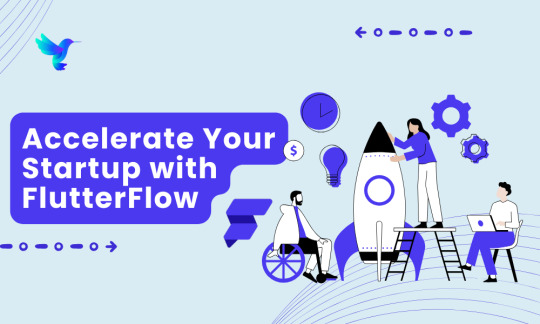
In the cut-throat competitive landscape of businesses, time to market, technology used, and profits generated are the cornerstones of defining success. The capability to implement advanced technology to innovate your business application and execute it successfully gives you a competitive edge. Traditional app development, with its daunting coding requirements and long timelines, often poses challenges for startups with an extended time to market.
Enters, low-code platforms that offer a simple solution to accelerate development without compromising on development quality. One of such platforms gaining popularity is, FlutterFlow.
Let’s explore why FlutterFlow is loved by so many startups and what it brings to the table. Before we get into the nitty-gritty of FlutterFlow, let’s dig in a little deeper to understand low-code development.
What Is Low Code Development?
Low code development refers to software development environments that let developers build applications through graphical user interfaces rather than traditional codes. The platforms reduce the amount of manual coding, which results in faster development lifecycles and easier iterations.
Benefits Of Low-Code Platforms
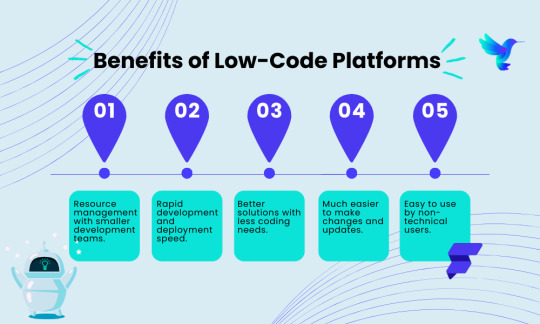
Rapid development and deployment speed.
Resource management with smaller development teams.
Better solutions with less coding needs
Easy to use by non-technical users, making it easier for them to contribute to the app development process.
Much easier to make changes and updates.
Thus with the ease and accessibility to even non-technical users, Low Code development is helping startups create professional applications on a budget. Some of the popular low-code platforms are Appian, Creatio, Outsystems, FlutterFlow, etc.
FlutterFlow gets a lead over others as it is taking low code development to new heights. Let’s now explore what makes FlutterFlow a perfect platform for your startup.
What is FlutterFlow?
FlutterFlow is built on Google’s Flutter framework, designed for developing cross-platform applications for Android, iOS, and the web. It offers a visual design interface, allowing users to plan app layouts effortlessly through simple drag-and-drop capability. FlutterFlow helps real-time collaboration, making it best for teams working together on a development project.
With an easy-to-use interface, no technical skills, and a strong framework to back it, FlutterFlow has been gaining popularity since it was conceived. Whether you are a startup or a small-scale business, if you want to create a mobile application that resonates with your audience, then, choose the FlutterFlow platform and let things flow.
Why FlutterFlow Is Perfect for Startups?
FlutterFlow is taking low code development to new heights by offering a visual development environment where users can build the solutions they want without compromising on app feature quality.
FlutterFlow basically incorporates and promotes best practices for software development. The platform streamlines complex IDE tasks into an intuitive UI, making developer interactions easier. To use the platform one needs basic training, thus even non-developers get into the basics of core app development concepts.
FlutterFlow entered the market with a vision to go from low code development to visual development. Here’s how the team is planning to achieve their goals:
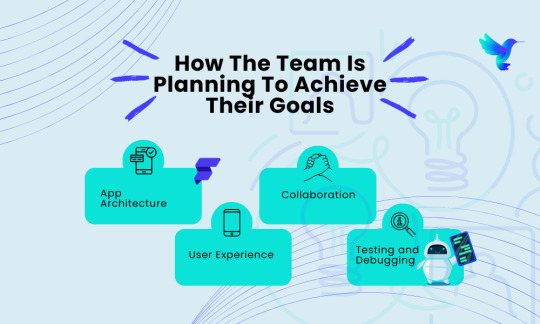
App Architecture: The codes generated using FlutterFlow meet the standards set by Flutter and Dart. They abide by the standard app market, thus helping users with a credible app development solution.
Testing and Debugging: The developers can simply test and debug the applications by running, testing, and resolving issues. This allows startups to enter the market with a flawless and highly rewarding application.
Collaboration: With modular development, smart version controls, and comprehensive access management, users can collaborate easily for better results.
User Experience: With an easy-to-explore interface, edit on clicks, ensure consistency, incorporate AI where possible, and users can switch between code and GUI.
FlutterFlow offers startups an environment where they can cross-operate, collaborate, and discuss their problems. The platform is conceived to make development easier, more convenient, and accessible for non-tech people also, who can easily make their contribution to the web now!
Some of the other advantages of the platform are:
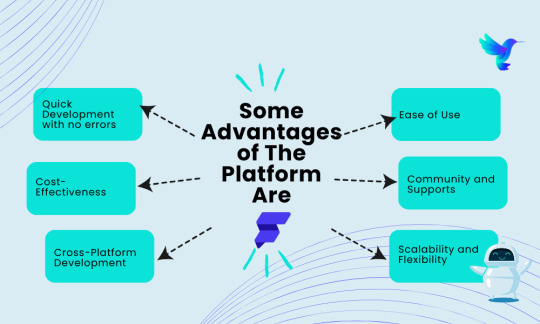
1. Quick Development With No Errors
The cheat code to making the best of your business is, to enter the market ASAP.
One of the most significant benefits of FlutterFlow is the speed at which the projects may develop. The platform’s visual interface and pre-built elements allow for speedy prototyping and development. Startups can fast-build minimum viable products (MVPs) to check thoughts in the marketplace without making a heavy investment in development sources.
Thus, you can create a product faster, take it to the market, and get feedback easily. We understand not every product works well on the first go, but with FlutterFlow you get the ease of making iterations and offering your audience a solution they’d appreciate.
2. Cost-Effectiveness
Most startups run on budget constraints. FlutterFlow helps reduce investing in large teams of seasoned developers. The platform’s drag-and-drop capability and pre-built templates lessen the quantity of custom code required, which translates to lower support and maintenance fees. A developer with lesser experience and understanding of the development languages can also, easily create an app here making it easier for you to invest your funds in other business verticals too.
3. Cross-Platform Development
FlutterFlow’s foundation lies at the Flutter framework which guarantees that applications are cross-platform by default. Thus by picking FlutterFlow startups can create and deploy applications to iOS, Android, and net platforms simultaneously. This cross-platform functionality is crucial for startups looking to maximize their target audience and digital presence without incurring the expenses and complexities of keeping separate codebases for specific platforms.
4. Ease Of Use
FlutterFlow is designed to be user-friendly, making it accessible to both skilled app developers and those with limited coding exposure. This democratization of app development means that non-technical founders and team members can contribute to the development procedure. FlutterFlow also gives tremendous documentation and tutorials, further decreasing the barrier to entry.
Because it is easy to use, the startup founders can make changes to the product as they want.
5. Scalability And Flexibility
Despite being a low-code platform, FlutterFlow gives massive flexibility. Users can add custom code to increase the functionality of their programs, making sure that they are now not confined with the aid of the platform’s built-in features. FlutterFlow additionally integrates seamlessly with backend services like Firebase and Supabase, bearing in mind robust and scalable backend solutions.
6. Community And Support
Being part of the Flutter ecosystem, FlutterFlow advantages from an active and supportive community. This network affords a wealth of assets, tutorials, and discussions that could assist startups conquer challenges and make the most of the platform. Additionally, FlutterFlow is continually evolving, with new capabilities and improvements being brought often based on user comments.
New users can always connect with the community for any assistance and customization thus creating a growth-oriented and learning ecosystem.
These are some of the most popular reasons why FlutterFlow is one of the most prominent low-code platforms for startups. So, if you are aiming to start your entrepreneurial journey and aren’t sure how to start without investing much in development, FlutterFlow is your trusted development partner.
Addressing Common Concerns of Using FlutterFlow
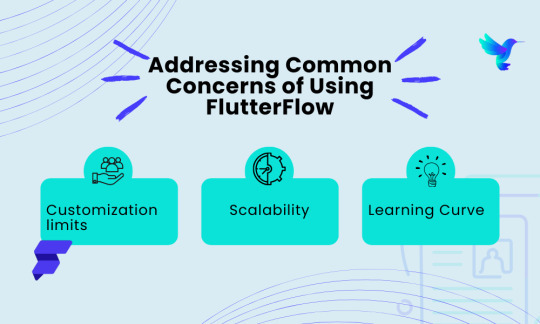
FlutterFlow may offer a great advantage for startups and businesses, but it does come with some limitations. Let’s explore the common concerns when working on the platform.
Customization Limits
The most common and often-faced concern with low-code platforms is the potential difficulty of customization. However, FlutterFlow mitigates this with the aid of custom code integration. This ensures that whilst you can enjoy the speed and efficiency of low-code development, you still have the flexibility to put into effect custom functions as wanted.
Scalability
Another concern is scalability. FlutterFlow is designed to handle significant user load and great data volumes through its integration with a powerful backend. Startups can hopefully scale their packages as their customer base expands, knowing that the platform is designed and developed to meet their business needs.
Startups with a limited user base can use the capabilities of FlutterFlow for future preparedness.
Learning Curve
While FlutterFlow is user-friendly, there can still be a strong learning curve, specifically for those new to app development. However, the considerable assets available, together with documentation, tutorials, and network help, assist mitigate this challenge.
Startups can always seek assistance from other development agencies experienced in FlutterFlow to boost learning and make sure first-class practices are followed. With little time and dedication, one can excel in their skills and implement them to build innovative products for the future.
Conclusion
FlutterFlow represents a tremendous advancement in the realm of low-code development systems, particularly for startups. Its combination of speed, value-effectiveness, ease of use, and flexibility makes it a super choice for early-stage businesses seeking to deliver their thoughts to the marketplace. By leveraging FlutterFlow, startups can reduce development time and fees, build cross-platform applications, and remain agile in a competitive landscape.
For startups and small-scale organizations trying to maximize their assets and boost their development process, FlutterFlow offers a compelling solution that bridges the gap between rapid prototyping and strong, scalable app development. As the platform continues to evolve and improve, it’s far poised to end up a good extra effective device for startups aiming to innovate and be triumphant in the virtual age.
#FlutterFlow#Custom App Development#FlutterFlow Startup businesses#Challenges for startups businesses#Low Code Development#graphical user interfaces#Benefits Of Low-Code Platforms#Google’s Flutter framework#cross-platform applications#Hire Flutter Developers#software development#advantage for startups and businesses
0 notes
Photo
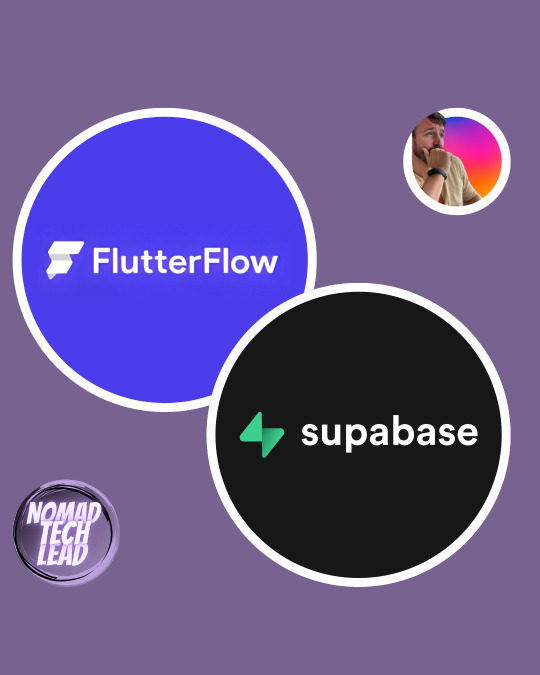
Due strumentini del cuore: FlutterFlow permette di creare app super carine e responsive per Android, IOS e Desktop, il tutto in un unico sviluppo. Potete anche integrare codice, API e appoggiarvi a Firebase o Supabase come DB, Storage e sistemi di autenticazione. Supabase è appunto un’alternativa di Firebase (di Google). Super comodo, super leggibile e customizzabile. Con le idee ben chiare, viene su un app in meno di una settimana, senza scrivere una riga di codice #thinkgoodspendless #lowcode #nocode #developer #nomadtechlead
0 notes
Text

Thinking about switching to low-code development? Start by learning tools like FlutterFlow, building quick prototypes, and helping your team grow into citizen developers. It’s all about building apps faster and smarter.
0 notes